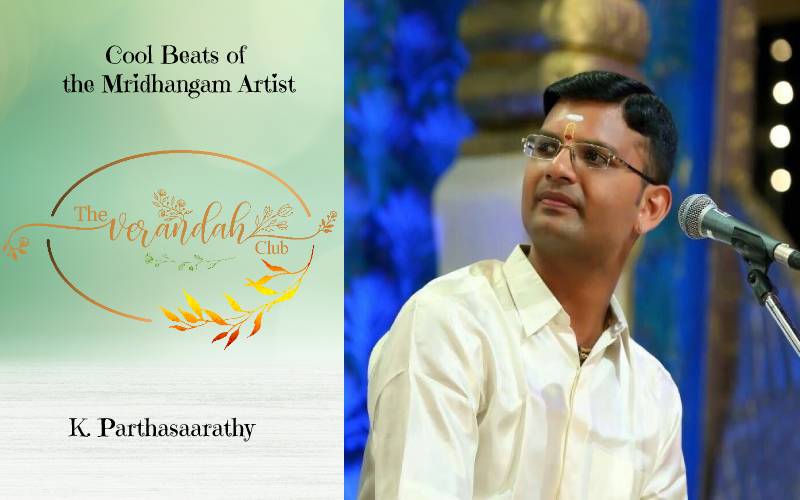
K. Parthasaarathy is a professional musician & composer who has worked with some of the great musicians and top Bharatanatyam dancers in the world of Carnatic music. He was a resident of Chennai. This touring-musician had felt that life had become more mechanical and wanted to spend some time with nature contemplating on various aspects. Though he had visited Kerala many a time, and liked the place, he says that he was not earnestly drawn towards it.
The artist spoke these words with conviction, “Wherever one lives, the quality-of-life matters. I am a kind of person who loves bike trails and cycling. My cycling trips are more connected to nature. I call it a triangle, this is my formula - I, nature, and music. Mostly my cycle rides are solo. It doesn’t mean that I don’t go group rides. But it gives some space in the mind to think about music. Nature, I say, gives the best of ambience to ramble through music. In this process, I would say I’m discovering more of myself, and it helps to better my life-style.”
Nature is the best food for thoughts. He says that Coimbatore is a place which renders pleasantness through its green covers. It is interesting to note that he has cycled more than 10,000 kms in less than a year with music constantly running in his head. Just by talking to Partha, one can find his passion towards music and nature are inseparable. Although he was more reluctant at the beginning to shift to Coimbatore, he feels now that he had made the right move.
Parthasaarathy gave an example to understand his ideas clearly. “In case, I have a Kachheri (Music concert) during the evening times, I go for a 30 kms ride in the morning. During this time, I do the mind-work of whatever I’m going to perform in the program. It will be like a virtual performance for me. Mentally, I’ll be doing a warm-up and practice when I cycle. Soon after this mind-performance, I return home, refresh myself, start practicing mridhangam for a while, and that’s it I’m ready for the stage.”
The Vaadyakaarar’s (Instrumentalist’s) practice sessions are mostly in the evening when he feels that only he and his mridhangam are present. Can we call it a right recipe of an artist?

The mridhangam artist said, “I started learning mridhangam at the age of four. It was more a family art. I belong to the family of Isaivellalars. My forefathers were giants in nadaswaram and thavil and were court musicians of Mysuru (Mysore). It was because of my mother that I detoured from our traditional instruments and picked mridhangam. Legendary mridhangam artist, Kuttalam R. Visvanatha Iyer, is my first guru. He must be around 75, when I started learning under his guidance. We, his students, used to call him, Thatha (stands for Grandfather in Tamil). I started learning mridhangam along with my nursery rhymes.”
The virtuoso retrospected that he had participated even in school and state level competitions only after the class of 8. It was only then he was allowed to participate by his guru. During that time, it seems he had bagged the first prizes in all the competitions that he participated in and has also participated in various international festivals as an artist. The inspiring thing about the mridhangam expert is that he owes all the credits to his guru. The intensive training that he had received under his guru, he says, is the reason for his success. Although he had never undergone any Gurukulavaasa (Formally learning an art from a guru by being with him in his premises for a long time), he feels that he received such a class training with the benefit of going back home.
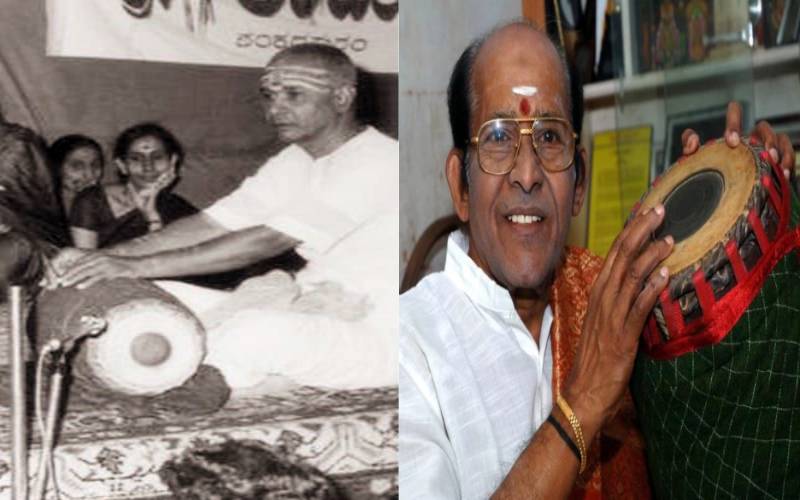
“When I started to bloom as an artist, my guru, Kuttalam R. Visvanatha Iyer, slowly started to retire from his course. I had seen him perform for the veterans like M. S. Gopalakrishnan, Sikkil Sisters, N. Ramani, Flute T. S. Sankaran, etc. I was badly hit when my guru passed away in November 2004. But well before his demise, he showed me the path on which I need to saunter to reach my destination in life. I remember him saying one must learn continuously and I follow his words.”
Parthasaarathy, then, moved on to sharpen his skills by studying under mridhangam maestro, Guruvayur Dorai, in 2005 at Mylapore, Chennai. He could connect with the master as they shared a similar wavelength, and they were more of neighbors. Vidwan Guruvayur Dorai is known to be a legendary figure in the stream of Carnatic music. Parthasaarathy proudly dedicates his make, the skills he had gained, and merits that he had gathered as a mridhangam artist, to his master Guruvayur Dorai. One is sure to observe the immense Guru-bhakti (Devotion towards the teacher) in the artist. Guru-bhakti is an integral part of Indian society and music as well. It reminds us that without guru, we would not have been what we are today.
The artisan uncontrollably says, “At the demise of my Guru Visvanatha, my dreams shattered. Even though I commenced performing in year 2000, when I studied 9th grade, I knew that without the guidance of a guru, I would reach nowhere in this art form because it was my primitive days. Dorai sir adopted me at the right time and provided necessary guidance for me to grow. Early 2000s had been a nice period for me to enter the era of music. Many renowned artists were alive and were performing. I was fortunate to listen to them and learn. But within brief period, they all passed away.”
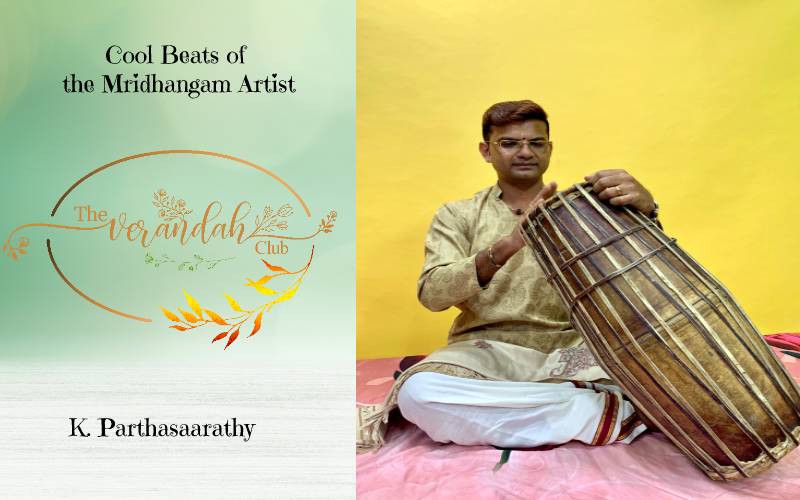
The Vaadyakarar had accompanied many artists including the famous, Violinist M. S. Gopalakrishnan, Saketharaman, Abhishek Raghuram, Sikkil Gurucharan, Palghat Ramprasad, K. Gayathri, Nisha Rajagopalan, to name a few. It is worth reminding that he had traveled several times with Padma Vibhushan Dr. M. Balamurali Krishna to perform concerts at US and had also chaperoned Junior Balamurali Krishna.
He says that he had learnt how to handle the instrument properly, how to maneuver a concert, how to stand as a musician, how to just sit on the dais and hold yourself, how to look at an artist and anticipate a music, and the kind of attitude that one must develop, from his master, Guruvayur Dorai. According to Parthasaarathy, the success of a concert lies in the attitude of a musician. Although swarakorvai are man-made and the math can be caught immediately, his teacher had trained him to gain competence in handling difficult swara-s including the Kalpanaswara-s, Saattaswara-s, Pinnalswara-s etc.
The humble artist revisited his memories, and said, “Bare minimum, I would have attended 100s of music concerts along with Dorai sir. It includes the performances of Sheshagopalan sir, Hyderabad Brothers, Mandolin Srinivas anna etc. I prefer to say, these things had molded me. From 2007, I slowly moved into Bharatanatyam, performing for the dancers. Just now, I must express, music is never a single entity restricted by time, place, or action, but is universal, embracing all sorts and walks of life. Music is multilingual.”
Even though at the beginning, Parthasaarathy found it difficult to balance both the boats, music concerts, and Bharatanatyam performances, he managed them and moved over to the arena of Bharatanatyam. He had felt that playing mridhangam for Bharatanatyam was altogether a different ball game. It had taken him a year’s time to understand the nuances of playing mridhangam for Bharatanatyam. In the due course, he had worked with top Bharatanatyam artists like Dr. Padma Subramaniam, Priyadharshini Govind, etc. Parthasaarathy, then, became a nattuvanar.
“It is in one of the concerts that I had met Lavanya Shankar and eventually I started working with her. From then on, I am closely associated with her institution, Abhyasa. I also compose music, write lyrics in both Sanskrit and Tamil, for her dance ballets, which is all Ishvarakripa (God’s grace). I’ve also worked with her for an entire dance production. Well, I would say ‘Rithottsava’ was well-received.”
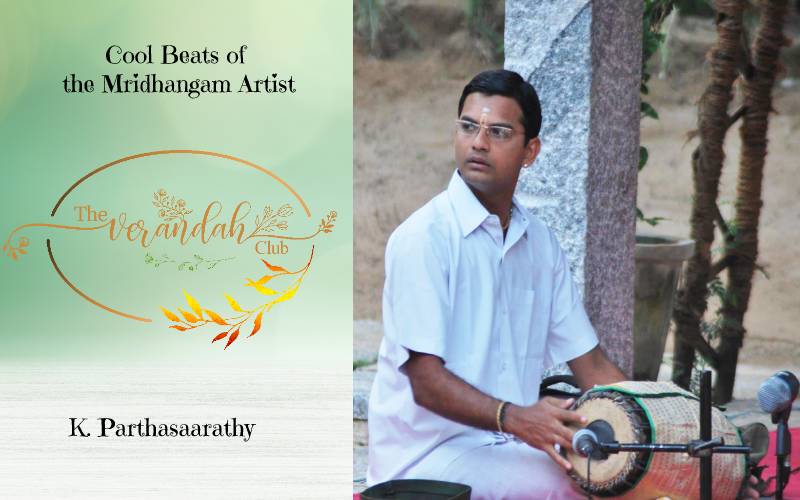
Parthasaarathy had composed the music for one of the dance performances, ‘Dwitva,’ of Abhyasa Academy of Classical Dance, which had happened during 2019. He had also composed, ‘Abhyasa Anthem,’ which proves to be his first ever composition. It can be simply said that Parthasaarathy lives with music. He says that given a situation he composes music over a chit-chat with other musicians. It must be referred to that not all Kalakar-s (Artists) are blessed with this gift.
“My vision is to break the barriers in music and do what is impossible. Like a bright opening with Dwijavanti raagam for dance. It is a relaxing kind of raagam and I used it to compose a pushpaanjali. Also, I used Vachaspati, which is a dhana raagam, in composing a thillana,” said the discerning musician, Parthasaarathy.
The multifaceted artist had remained a nattuvanar for dancers including Narthaki Nataraj, Shijith Nambiar & Parvathy Menon, Lavanya Ananth, Bhargavi Gopalan, and many more for a period of time. As a nattuvanar, before he was 30, he had traveled to 30 countries. After 2016, he stopped doing nattuvaangam for any artist and continues to be a mridhangam player. The stark contrast remains in the fact that he teaches nattuvaangam expert’s class for many famous performers but not mridhangam.
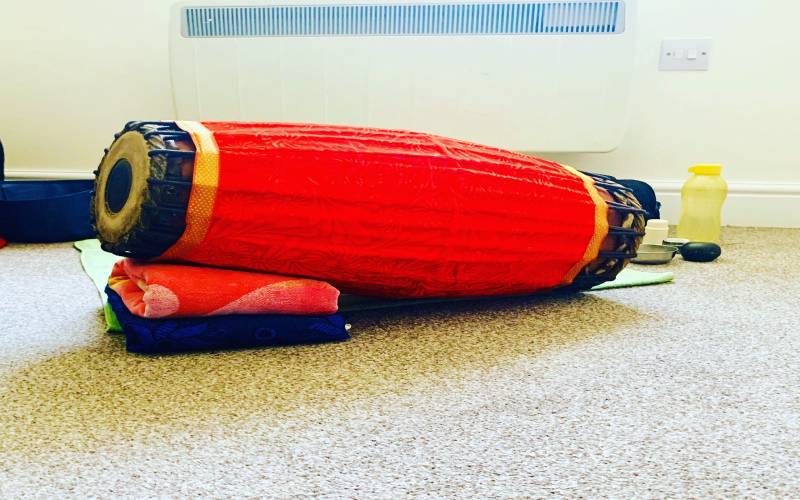
Vidwaan Sembanarkovil S. R. G. Rajanna (92) is Parthasaarathy’s maternal grandfather. He is a nadaswaram vidwaan. Rajanna is also a recipient of Kalaimamani, and Sangeet Naatak Academy awards and had traveled worldwide. It appears one of the inspirations of Parthasaarathy is Rajanna. The famed Pandanallur Thavil Rathinampillai was his paternal grandfather. His beats were so powerful that the entire court of Mysuru (Mysore) seemed to have reverberated. The passionate musician wants to achieve more in his career and create an identity for himself instead of just living in his forefathers’ glory.
Parthasaarathy concluded by saying, “It is impossible to achieve anything without practice and one can also go beyond limits with the same. I learnt this from Dr. M. Balamurali Krishna sir, in fact more. All that I would say is, we must never mess up between the fundamentals and creativity. And adhere to fundamentals as much as possible.”
He follows Pudhukottai bhaani (Pudhukottai style of playing mridhangam) which was created by Maan Poondiya Pillai. There are two types of mridhangam-s known in the planet of music, kucchi and kappi. The difference between the two is, one sounds bright and jarring, while the other is deep, dark, and muted. It can be noticed that most go for the former, while Parthasaarathy prefers to play the latter even for Bharatanatyam performances.
Parthasaarathy continues to excel in his stream of music and is sure to create a landmark with cascading time.

T. R. Surya is the special correspondent of the company. He is an eloquent speaker and compendious writer of English. An avid learner of Sanskrit and Indian scriptures under the guidance of Swami Ganeshaswarupananda and Gita Chaitanya of Arshavidyalaya. His inclination and interests are towards studying Metaphysics and philosophies.
NEXT ARTICLE